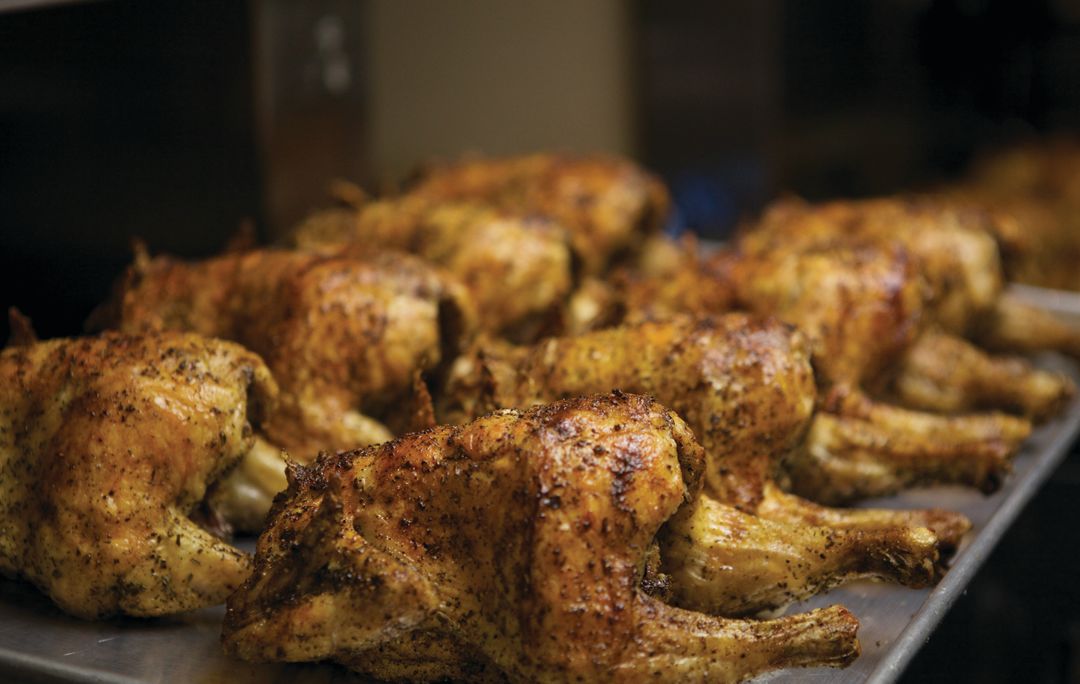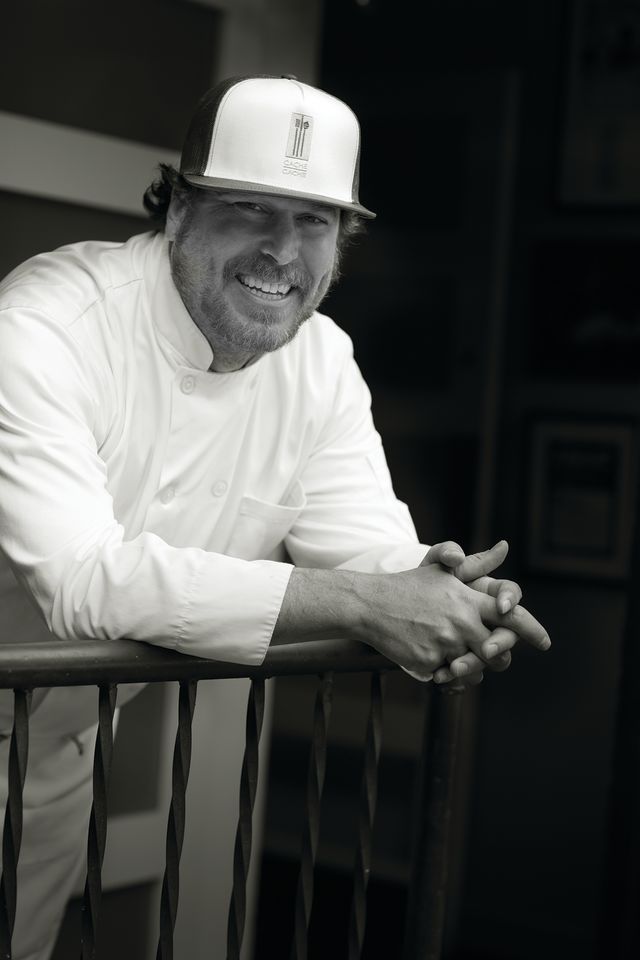The Latest Dish on the Cannabis Cuisine Scene

Chef Chris Lanter also often infuses his famous roast chicken with cannabis.
Image: Courtesy: Cache Cache
It has an extremely sweet bouquet, especially on the front end,” says the salesperson. “You could pair that with a lot of things, realistically—maybe something on the dessert menu.”
It might sound like a wine pairing, but he isn’t talking about a French rosé or German Riesling. Instead he’s describing Bubble Gum, a strain of marijuana that Chris Lanter, head chef and co-owner of popular Aspen restaurant Cache Cache, is considering for a four-course marijuana-infused celebratory dinner at a private residence. This visit to the dispensary, captured in a short film about the dinner, is in the same vein as a trip to the farmer’s market or wine cellar as he considers how the plant’s characteristics will meld with dishes like Alaskan king crab served over cantaloupe brunoise with cannabis-infused sweet avocado puree. It’s a far cry from the pot brownies you made in college.
“In the hands of someone who knows what they’re doing, the possibilities of cooking with cannabis are limitless,” says Lanter. “Because it can be incorporated into any kind of fat, including oil, butter, and cream, you can literally cook anything with it.”
With the 2012 passage of Amendment 64, which legalized marijuana in Colorado for personal use, some Aspen chefs have been experimenting with cannabis cuisine, whipping up multicourse meals with quality ingredients. However, you won’t find these dishes on the typical menu—at least for the foreseeable future. Since the law stipulates that marijuana is not permitted to be consumed in public, in any form, cannabis-enhanced dishes can only be catered in private spaces or homes.
Nonetheless, acknowledges Lanter, cooking with cannabis has come a long way since legalization, partly because commercial growers have been able to refine their strains and characteristics, from the aroma of the bud to the kind of high it will produce, and partly because chefs are figuring out dosages.

Image: Courtesy: Chris Lanter
Lanter, for example, uses a technique he learned from a chemist during the making of a documentary about cooking with cannabis that not only helps maintain and enhance the potency of THC—the psychoactive element that produces a high—but also allows the chef to measure the exact dose. (One tablespoon of infused oil equals 10 milligrams of THC. A mild dose for someone who has never tried pot would be 5 milligrams, but a regular user could potentially handle 10 times that amount.) The effect takes longer to kick in when cannabis is ingested instead of smoked, and it can last longer, too.
“At first, I didn’t know there was a scientific method,” says Lanter. “It used to be if you ate too much and got too high, the next time you’d just eat less. But I’ve overdosed before, and it’s pretty awful. Now I use the same process every time.”
As soon as weed was legalized, chef Randy Placeres, who owns catering company Aspen Culinary Solutions, recognized an opportunity for creative cooking. He hosted his first cannabis dinner at his house during the Food & Wine Classic in Aspen in 2014, even providing a “canni-bus” to safely transport guests; it was a huge success.
“The whole world is watching Colorado to see how we’re going to handle this, and I think we’re doing it well,” says Placeres, noting that real food infused with cannabis imparts a different high than smoking pot or ingesting sugar-loaded edible candies.
He’s now served cannabis-infused cuisine at close to 100 parties and dinners, featuring dishes like yellowtail sashimi with coconut-ginger sativa oil or brie and burrata grilled cheese sandwiches seared with cannabis butter. Placeres is also writing a cannabis cookbook (working title: T.H.C.uisine) and creating a line of gourmet cannabis-infused “dope sauces.”
He cooks with infused oils that have already been purified and formulated by a lab so he can control the dosing. “It’s just like doing a wine dinner,” he says. “I’ll give people a chance to see the effects between courses before they decide if they want more.” Placeres will often infuse part of a dish—soaking a caperberry, for example—and give people the option to eat it or not. “Usually, people want more,” he says with a laugh.
By promoting cannabis-friendly food, Chef Francis Stuckens, proprietor of catering company Green Cuisine, aims to erase pot’s stigma. “I want to take away the vilification of marijuana and treat cannabis like a fine wine or single-malt scotch,” he says. “Pot should be accepted on a much more evolved level, and Aspen is the place for this to happen.” Assuming the law changes, Stuckens hopes to open a restaurant locally that offers cannabis-infused dishes by the end of 2018.
Could pot-paired feasts become as popular as wine dinners in Aspen? “This is part of the evolution of the legalization of cannabis,” says Placeres. “I don’t know if it’s the next big culinary trend, but it sure is a lot of fun."













































